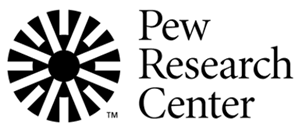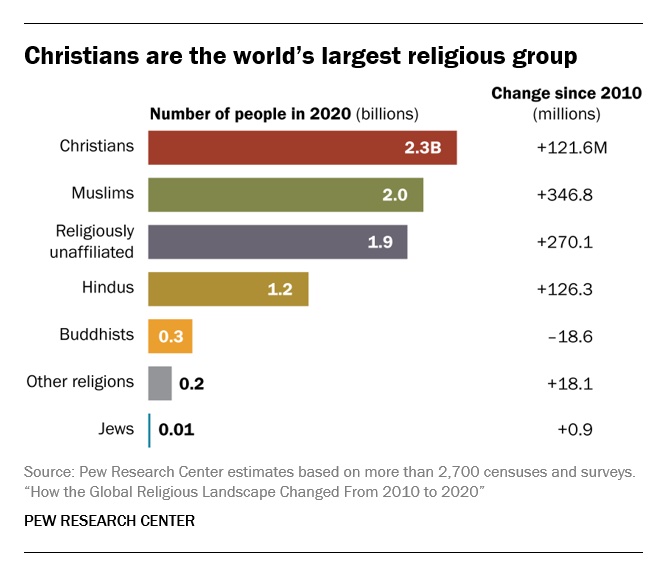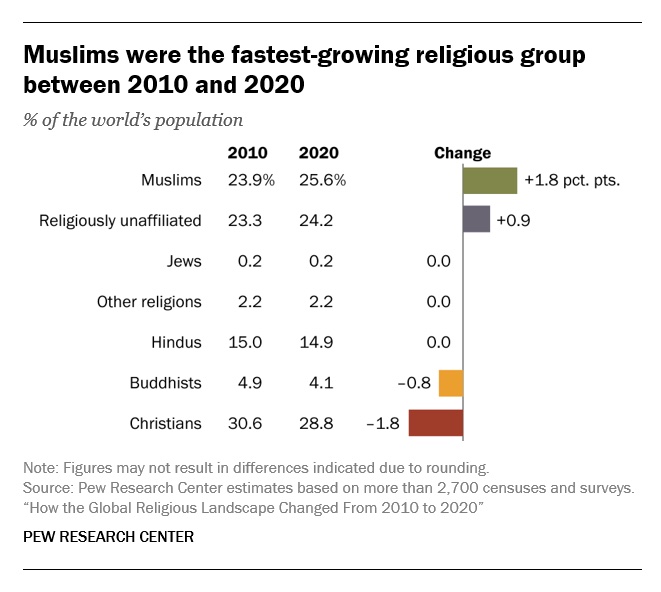Uncategorized
How one special Pink Day helps save and support cancer patients
When Rachel Wojnilower was an undergraduate at American University in Washington, D.C., she did all kinds of activities with her Jewish sorority, Alpha Epsilon Phi. Now 36, Wojnilower has let most of them fade from memory.
But in retrospect, one in particular stands out.
That’s because about five years after graduating, Wojnilower got married and underwent genetic testing along with her husband as they both prepared for future children. They were surprised when they each tested positive as carriers of a potentially dangerous mutation, and even more so when Wojnilower learned, after additional testing, that she also carried a mutation in the BRCA1 gene.
Such mutations, which are 10 times more common among Ashkenazi Jewish men and women than among the general U.S. population, significantly elevate the risks for breast cancer and ovarian cancer, and also increase the risks for melanoma, pancreatic and prostate cancers.
Without any intervention, there was a 50-50 chance that the couple would pass down this dangerous mutation to their children. Wojnilower didn’t know what to do.
“As you can imagine, my stress and anxiety levels were through the roof,” Wojnilower recalled. “I didn’t know a single person who had ever gone through this before.”
Then she remembered one of the volunteer opportunities she had done with Alpha Epsilon Phi: a fundraising drive for Sharsheret, the national Jewish breast cancer and ovarian cancer organization.
Wojnilower reached out to Sharsheret and spoke to one of organization’s social workers, who explained more about the mutation and what measures she could take to protect her health and that of her future children. The social worker connected Wojnilower with a trained peer supporter — another young woman who had had a very similar experience.
Ultimately, Wojnilower and her husband decided to pursue pre-implantation genetic diagnosis (PGD) — a cutting-edge procedure used with in-vitro fertilization (IVF) to screen embryos. This enabled them to identify which embryos were lower-risk and thereby reduce the chances of passing on the BRCA mutation.
Wojnilower has since given birth to two healthy children, both free of the genetic mutations that she and her husband carry.
“That’s really the essence of what we do at Sharsheret, which is Hebrew for the word chain. We are connecting women, families, and communities to each other and to life-changing and, quite frankly, lifesaving resources,” said Jordana Altman, Sharsheret’s director of marketing and communications. “Whatever the issue may be, you’re not alone, and we have skilled trained professionals and a community of thousands who together form a chain of support and information.”
Sharsheret Pink Day events, like this student-run fundraiser at Binghamton University, now take place at more than 150 college campuses, Jewish day schools and companies around the world. (Courtesy of Phi Mu Chapter of Alpha Epsilon Phi at Binghamton University)
In the years since Wojnilower was a student, Sharsheret has expanded its activities on college campuses and in Jewish day schools much more widely. One centerpiece of Sharsheret’s activities on campus is Sharsheret Pink Day — an annual day in February dedicated to the cause during which students and faculty dress in pink and undertake other activities to raise awareness of the risks for breast cancer and ovarian cancer as well as Sharsheret’s critical support programs.
The goal of Pink Day is to engage young people to participate in activities that they will remember later in life so that when one of them confronts a cancer-related challenge or helps someone who is, they’ll remember the resources Sharsheret offers. This year, Sharsheret hosted Pink Day activities around the United States at college campuses, Jewish high schools and day schools.
“We are planting seeds about Sharsheret,” said Ellen Kleinhaus, Sharsheret’s regional director of education and outreach. “While today you may only need Sharsheret to better understand your risk, you or someone you love will need Sharsheret for support in the future. There isn’t a family or a community out there that is not touched by breast cancer or ovarian cancer.”
Pink Day’s origins can be traced to 2006, when a New Jersey Jewish high school organized a dedicated day for students to support Sharsheret by wearing pink and sharing resources with their parents.
“It was such a memorable part of my high school experience,” said Tzvi Solomon, one of the students who initiated Sharsheret Pink Day. “People really rallied around it.”
Solomon was so inspired by the event that when he went to Israel for his gap year, he asked peers in the United States and Israel to bring Pink Day to their schools. Now an international initiative, the program engages thousands of participants at more than 150 schools and companies globally.
“I think it’s a reflection of our community being sensitive and recognizing the importance of having an organization like Sharsheret,” said Solomon, whose young son wore a pink shirt to school on this year’s Sharsheret Pink Day.
Amanda Goldsmith, 28, has been involved with Sharsheret since her Jewish day school hosted a Pink Day. Years later, while attending New York University, Goldsmith remembered Sharsheret when her parents called her one morning to inform her that her mother had just been diagnosed with breast cancer. Goldsmith immediately turned to Sharsheret for help and information, and she referred her mother to the organization’s peer support network.
During her mother’s treatment, Goldsmith vowed that once her mother was cancer free she’d start an initiative to get college students in New York City more involved with Sharsheret. She ended up establishing a local student board for the organization in New York City.
On Sharsheret Pink Day last year, Goldsmith, a human resource professional, implemented Wear Pink at Work, where her colleagues gave a $5 donation to Sharsheret and wore pink to the office. Her family also established a new Sharsheret program for young adults called YAD: The Young Adult Corner, which helps young adults understand their loved ones’ diagnoses, provides peer support and manages a website about cancer for young adults.
“It’s really just about spreading Sharsheret’s mission because they do so much good for so many people,” said Goldsmith, whose mother is now cancer free. “Pink Day might seem like something relatively small, but it’s hugely important.”
To learn more about Sharsheret, YAD: Young ADult Caring Corner or Sharsheret Pink Day 2024, email info@sharsheret.org.
—
The post How one special Pink Day helps save and support cancer patients appeared first on Jewish Telegraphic Agency.
Uncategorized
How the Global Religious Landscape Changed from 2010 to 2020

Muslims grew fastest; Christians lagged behind global population increase
• Christians are the world’s largest religious group, at 28.8% of the global population. They are a majority everywhere except the Asia-Pacific and Middle East-North Africa regions. Sub-Saharan Africa has surpassed Europe in having the largest number of Christians. But Christians are shrinking as a share of the global population, as millions of Christians “switch” out of religion to become religiously unaffiliated.

• Muslims are the world’s second-largest religious group (25.6% of the world’s population) and the fastest-growing major religion, largely due to Muslims’ relatively young age structure and high fertility rate. They make up the vast majority of the population in the Middle East-North Africa region. In all other regions, Muslims are a religious minority, including in the Asia-Pacific region (which is home to the greatest number of Muslims).

• The religiously unaffiliated population is the world’s third-largest religious category (24.2% of the global population), after Christians and Muslims. Between 2010 and 2020, religiously unaffiliated people grew more than any group except Muslims, despite their demographic disadvantages of an older age structure and relatively low fertility. The unaffiliated made up a majority of the population in 10 countries and territories in 2020, up from seven a decade earlier.
• Hindus are the fourth-largest religious category (14.9% of the world’s population), after Christians, Muslims and religiously unaffiliated people. Most (99%) live in the Asia-Pacific region; 95% of all Hindus live in India alone. Between 2010 and 2020, Hindus remained a stable share of the world’s population because their fertility resembles the global average, and surveys indicate that switching out of or into Hinduism is rare.
• Buddhists (4.1% of the world’s population) are the only group in this report whose number declined worldwide between 2010 and 2020. This was due both to religious disaffiliation among Buddhists in East Asia and to a relatively low birth rate among Buddhists, who tend to live in countries with older populations. Most of the world’s Buddhists (98%) reside in the Asia-Pacific region, the birthplace of Buddhism.
• Jews, the smallest religious group analyzed separately in this report (0.2% of the world’s population), lagged behind global population growth between 2010 and 2020 – despite having fertility rates on par with the global average – due to their older age structure. Most Jews live either in North America (primarily in the United States) or in the Middle East-North Africa region (almost exclusively in Israel).
These are among the key findings of a Pew Research Center analysis of more than 2,700 censuses and surveys, including census data releases that were delayed due to the coronavirus pandemic. This report is part of the Pew-Templeton Global Religious Futures project, which analyzes global religious change and its impact on societies around the world. Funding for the Global Religious Futures project comes from The Pew Charitable Trusts and the John Templeton Foundation.
Uncategorized
Antisemitism in some unlikely places in America

By HENRY SREBRNIK Antisemitism flourishes in a place where few might expect to confront it – medical schools and among doctors. It affects Jews, I think, more emotionally than Judeophobia in other fields.
Medicine has long been a Jewish profession with a history going back centuries. We all know the jokes about “my son – now also my daughter – the doctor.” Physicians take the Hippocratic Oath to heal the sick, regardless of their ethnicity or religion. When we are ill doctors often become the people who save us from debilitating illness and even death. So this is all the more shocking.
Yes, in earlier periods there were medical schools with quotas and hospitals who refused or limited the number of Jews they allowed to be affiliated with them. It’s why we built Jewish hospitals and practices. And of course, we all shudder at the history of Nazi doctors and euthanasia in Germany and in the concentration camps of Europe. But all this – so we thought – was a thing of a dark past. Yet now it has made a comeback, along with many other horrors we assume might never reappear.
Since the Hamas attack on Israel on October 7, 2023, there has been a resurgence of antisemitism, also noticeable in the world of healthcare. This is not just a Canadian issue. Two articles on the Jewish website Tablet, published Nov. 21, 2023, and May 18, 2025, spoke to this problem in American medicine as well, referencing a study by Ian Kingsbury and Jay P. Greene of Do No Harm, a health care advocacy group, based on data amassed by the organization Stop Antisemitism. They identified a wave of open Jew-hatred by medical professionals, medical schools, and professional associations, often driven by foreign-trained doctors importing the Jew-hatred of their native countries, suggesting “that a field entrusted with healing is becoming a licensed purveyor of hatred.”
Activists from Doctors Against Genocide, American Palestinian Women’s Association, and CODEPINK held a demonstration calling for an immediate cease-fire in Gaza at the Hart Senate Office Building in Washington, D.C., Nov. 16, 2023, almost as soon as the war began. A doctor in Tampa took to social media to post a Palestinian flag with the caption “about time!!!” The medical director of a cancer centre in Dearborn, Michigan, posted on social media: “What a beautiful morning. What a beautiful day.” Even in New York, a physician commented on Instagram that “Zionist settlers” got “a taste of their own medicine.” A Boston-based dentist was filmed ripping down posters of Israeli victims and a professor at the University of Pennsylvania Perelman School of Medicine did the same. Almost three-quarters of American medical associations felt the need to speak out on the war in Ukraine but almost three-quarters had nothing to say about the war in Israel.
Antisemitism in academic medical centres is fostering noxious environments which deprive Jewish healthcare professionals of their civil right to work in spaces free from discrimination and hate, according to a study by the Data & Analytics Department of StandWithUs, an international, non-partisan education organization that supports Israel and fights antisemitism.
“Academia today is increasingly cultivating an environment which is hostile to Jews, as well as members of other religious and ethnic groups,” StandWithUs director of data and analytics, and study co-author, Alexandra Fishman, said on May 5 in a press release. “Academic institutions should be upholding the integrity of scholarship, prioritizing civil discourse, rather than allowing bias or personal agendas to guide academic culture.”
The study, “Antisemitism in American Healthcare: The Role of Workplace Environment,” included survey data showing that 62.8 per cent of Jewish healthcare professionals employed by campus-based medical centres reported experiencing antisemitism, a far higher rate than those working in private practice and community hospitals. Fueling the rise in hate, it added, were repeated failures of DEI (diversity, equity, and inclusion) initiatives to educate workers about antisemitism, increasing, the report said, the likelihood of antisemitic activity.
“When administrators and colleagues understand what antisemitism looks like, it clearly correlates with less antisemitism in the workplace,” co-author and Yeshiva University professor Dr. Charles Auerbach reported. “Recognition is a powerful tool — institutions that foster awareness create safer, more inclusive environments for everyone.”
Last December, the Data & Analytics Department also published a study which found that nearly 40 per cent of Jewish American health-care professionals have encountered antisemitism in the workplace, either as witnesses or victims. The study included a survey of 645 Jewish health workers, a substantial number of whom said they were subject to “social and professional isolation.” The problem left more than one quarter of the survey cohort, 26.4 per cent, “feeling unsafe or threatened.”
The official journal of the Alliance for Academic Internal Medicine concurs. According to “The Moral Imperative of Countering Antisemitism in US Medicine – A Way Forward,” by Hedy S. Wald and Steven Roth, published in the October 2024 issue of the American Journal of Medicine, increased antisemitism in the United States has created a hostile learning and practice environment in medical settings. This includes instances of antisemitic behaviour and the use of antisemitic symbols at medical school commencements.
Examples of its impact upon medicine include medical students’ social media postings claiming that Jews wield disproportionate power, antisemitic slogans at the University of California, Los Angeles (UCLA) David Geffen School of Medicine, antisemitic graffiti at the University of California, San Francisco (UCSF) Cancer Centre, Jewish medical students’ exposure to demonization of Israel diatribes and rationalizing terrorism; and faculty, including a professor of medicine at UCSF, posting antisemitic tropes and derogatory comments about Jewish health care professionals. Jewish medical students’ fears of retribution, should they speak out, have been reported. “Our recent unpublished survey of Jewish physicians and trainees demonstrated a twofold increase from 40% to 88% for those who experienced antisemitism prior to vs after October 7,” they stated.
In some schools, Jewish faculty are speaking out. In February, the Jewish Faculty Resilience Group at UCLA accused the institution in an open letter of “ignoring” antisemitism at the School of Medicine, charging that its indifference to the matter “continues to encourage more antisemitism.” It added that discrimination at the medical school has caused demonstrable harm to Jewish students and faculty. Student clubs, it said, are denied recognition for arbitrary reasons; Jewish faculty whose ethnic backgrounds were previously unknown are purged from the payrolls upon being identified as Jews; and anyone who refuses to participate in anti-Zionist events is “intimidated” and pressured.
Given these findings, many American physicians are worried not only as Jewish doctors and professionals, but for Jewish patients who are more than ever concerned with whom they’re meeting. Can we really conceive of a future where you’re not sure if “the doctor will hate you now?”
Henry Srebrnik is a professor of political science at the University of Prince Edward Island.
Uncategorized
The 2025 Toronto Walk (and talk ) for Israel

By GERRY POSNER There are walks and then there are walks. The Toronto UJA Walk for Israel on May 25, 2025 was one of a kind, at least as far as Canada and Jews are concerned. The number of people present was estimated to be 56,000 people or 112,000 total shoes. (How they get to that number is bewildering to me, since there is no one counting). This was 6,000 more than last year. Whether it is true or not, take it from me, it was packed. The synagogues in Canada should be so fortunate to get those numbers in total on High Holidays. The picture here gives you a sense of the size of the crowd.

This was my first walk in Toronto for Israel and I was with my granddaughter, Samantha Pyzer (not to forget her two friends whom she managed to meet at the site, no small feat, even with iPhones as aids). The official proceedings began at 9:00 a.m. and the walk at 10:00 a.m. There was entertainment to begin with, also along the way, and at the finish as well. The finish line this year was the Prosserman Centre or the JCC as it often called. The walk itself was perhaps 4 kilometres – not very long, but the walking was slow, especially at the beginning. There were lots of strollers, even baby carriages, though I did not see any wheelchairs. All ages participated on this walk. I figured, based on what I could see on the faces of people all around me that, although I was not the oldest one on the walk, I bet I made the top 100 – more likely the top 20.
What was a highlight for me was the number of Winnipeggers I met, both past and present. Connecting with them seemed to be much like a fluke. No doubt, I missed la lot of them, but I saw, in no particular order (I could not recall the order if my life depended on it): Alta Sigesmund, (who was, a long time ago, my daughter Amira’s teacher), Marni Samphir, Karla Berbrayer and her husband Dr. Allan Kraut and family. Then, when Samantha and I made it to the end and sat down to eat, I struck up a conversation with a woman unknown to me and as we chatted, she confirmed her former Winnipeg status as a sister-in- law to David Devere, as in Betty Shwemer, the sister of Cecile Devere. I also chanced upon Terri Cherniack, only because I paused for a moment and she spotted me. As we closed in near the finish, I met ( hey were on their way back), Earl and Suzanne Golden and son Matthew, as well as Daniel Glazerman. That stop caused me to lose my granddaughter and her pals. Try finding them amid the noise and size of the crowd – but I pulled it off.

As I was in line to get food, I started chatting with a guy in the vicinity of my age. I dropped the Winnipeg link and the floodgates opened with “ Did I know Jack and Joanie Rusen?” So that was an interesting few minutes. And I was not too terribly surprised to come across some of my Pickleball family. All of these meetings, along with spotting some of my sister’s family and other cousins, were carried on with the sound of the shofar as we moved along the way. In short, this was a happening. Merchants selling a variety of products, many of them Israeli based, were in evidence and, of course, the day could not have ended without the laying of tefillin, aided by Chabad, who have perfected the procedure to take less than a minute. See the photo. Chabad had a willing audience.
Aside from the joy of sharing this experience with my granddaughter, the very presence of all these Jews gathered together for a common reason made this day very special to me. However, there was a downside to the day. The downside was that, as we began to walk back to our car there was no other way I could figure out how to return when the rains came and came. While we walked faster, we were impeded by pouring rain and puddles. But Samantha wanted to persevere, as did I. We made it, but were drenched. My runners are still drying out as I write this two days later.
What with being surrounded by 56,000 people, the noise, the slow walking, and the rain, I can still say the day was a real highlight for me – one of the better moments since our arrival in Toronto in 2012. As well as the photos we took along the way, I have the reminder of the day, courtesy of the UJA, as evidenced from the photo. It was not just the walk, but the talk that accompanied the walk that made it so worthwhile for me. I would do it again, minus the rain.
